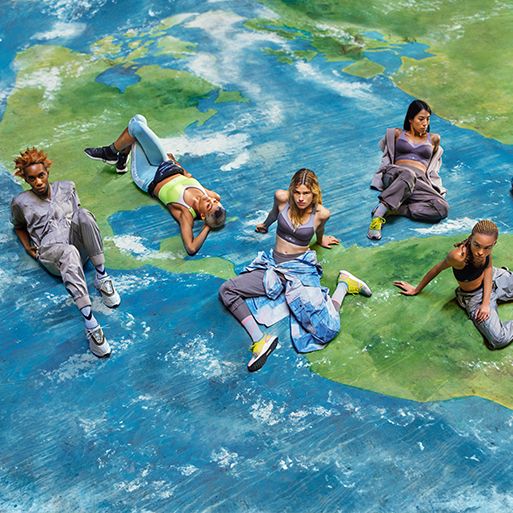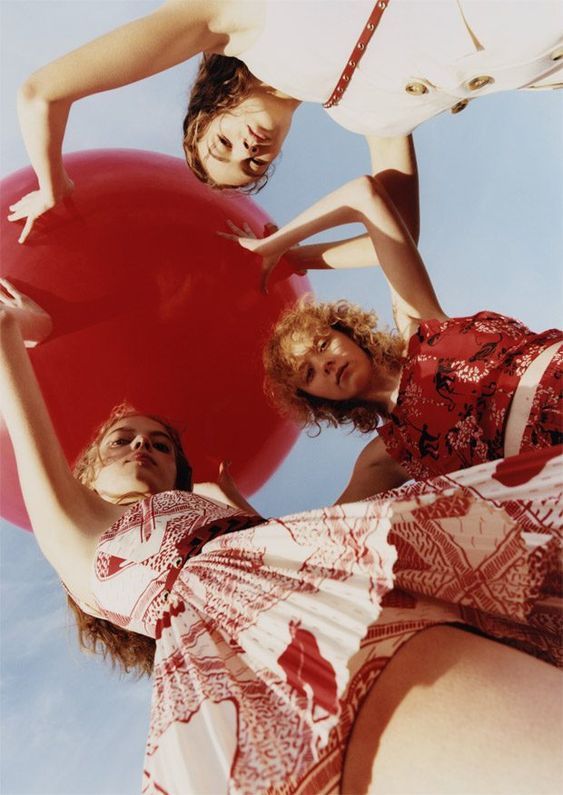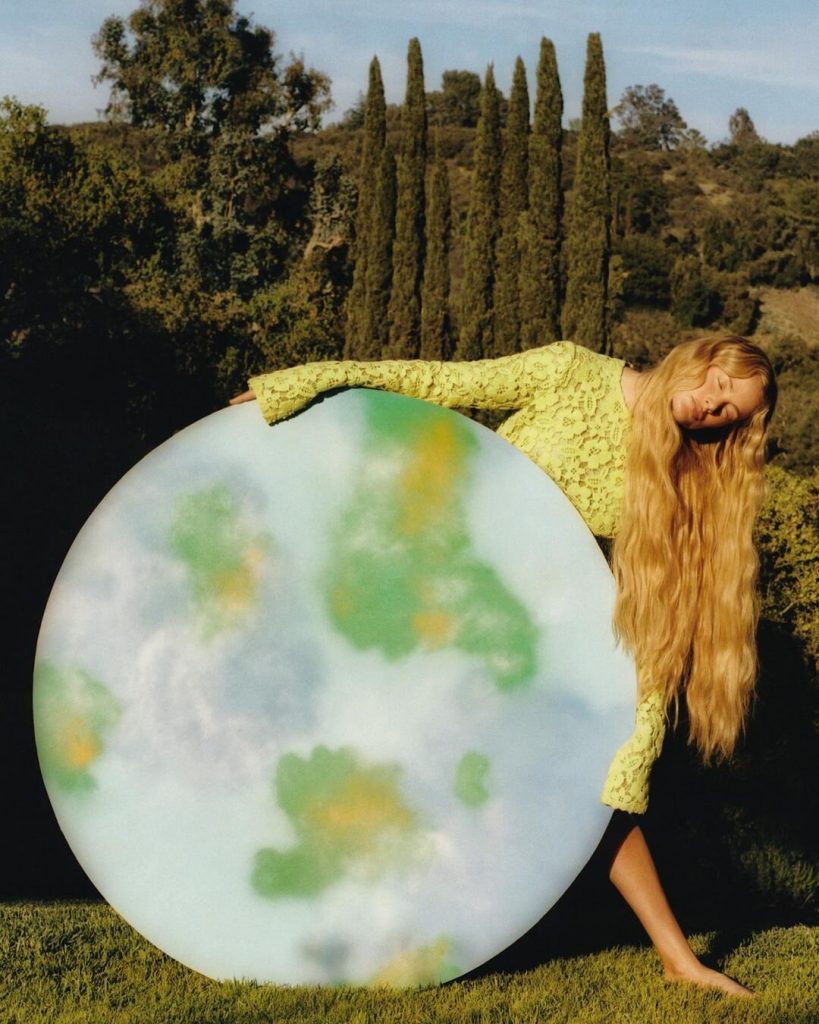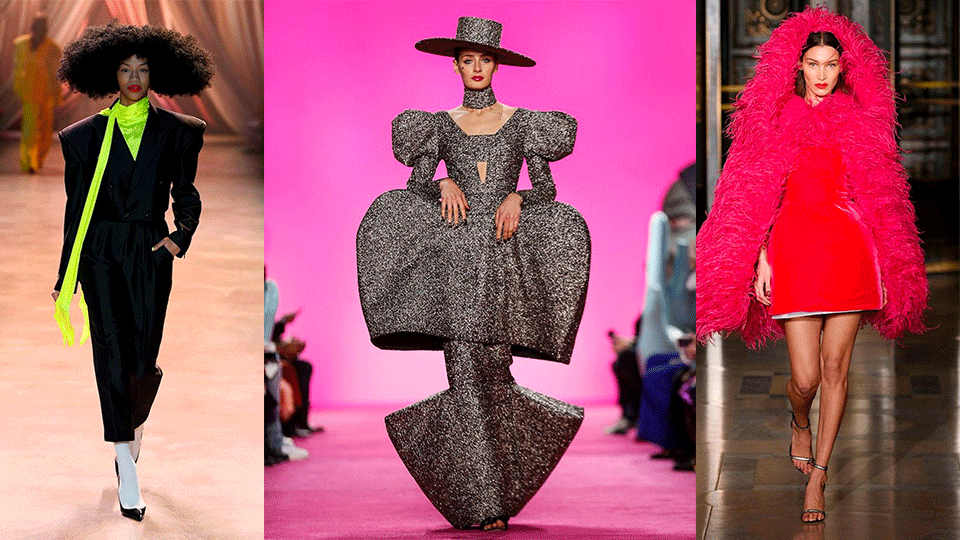- À New Wave to Fashion, À New Way of Living. Download Now on iOS Android Canada SS22
- hello@alahausse.ca
The Full Circle of Fashion: Working towards a Circular Fashion Economy

Three Degrees of Fashion: How 3D Printing Can Benefit Fashion Sustainability
May 28, 2021
Spacetex: Clothes made for space, the Fiber behind Gravity
June 4, 2021
Written by Danielle Williams
The Fashion industry has been faced with intense stresses to reduce waste and carbon emissions from a new generation of consumers that mandate environmental responsibility. The notion of the circular fashion industry is a growing effort promoting sustainability in all materials while eliminating waste and pollution to encourage a regenerative economical circular model. The potential value of the circular fashion economy is estimated at $5 trillion according to data gathered and reported in the circular fashion report for 2020. This incentive alone is causing brands to rethink their structure and redirect their vision towards a more sustainable culture.
“Collaboration and transparency are key to understanding and improving the fashion industry.”
— Sarah Shannon
Editorial Director, Vogue Business

The Goal
Experts in sustainability say the fashion industry has only just begun to dive into the prospective options to reuse and recycle materials, but the industry is quickly evolving and coming to realize that much of the product ending up in landfills can be reused instead of wasted. With the constant improvement of recycling technologies, there is hope to transform the industry into a sustainable one.
The Circular Fashion Report favors a more product-centric approach rather than consumer-centric, which is just one of many steps to bring the industry towards traceability, transparency, and sustainability.
Circular Fashion Economy vs. Circular Economy
A circular economy is taking a more systematic approach to economic expansion curated to support businesses, society, and the environment. This economical model strives to progressively separate growth from consumption and steer away from a linear fashion economy.
The term “circular fashion economy” was coined in 2014 as an expansion from the circular economy ideal and has rapidly been gaining traction and has been embraced by many brands and designers from 2018 onwards. A circular fashion industry is one that promotes a sustainable economy by eliminating waste and pollution and keeping products and materials in cycle for as long as their life permits.
The Circular Fashion Report favors a more product-centric approach rather than consumer-centric, which is just one of many steps to bring the industry towards traceability, transparency, and sustainability.
Linear Fashion Economy
The existing economical structure for the industry is exceedingly waste and pollution heavy. The Circular Fashion report says that the amount of times a garment is worn has decreased by 36% in the last 15 years, likely because of fast fashion and lack of capsule wardrobes. The linear fashion model currently uses excessive amounts of resources and has detrimental effects on the environment. The textile industry strongly depends on non-renewable resources, roughly 98 million tons a year, which includes oil, dyes, synthetic fabrics, fertilizers to grow cotton, and finishing fibres. Eliminating linear systems will make significant improvements in the industry’s goal of sustainability.
Circular Fashion, but make it Digital
Without the help of digitization, creating a circular fashion economy wouldn’t be possible. It has opened up a new way to connect and build relationships between brands, supply chains, retailers and consumers. Social media platforms have had a lot to do with creating a more direct brand-to-consumer rapport which is beginning to conceal the line between retailer and consumer. This will pivot the focus to be more on the product and allow data to be collected regarding the products life span.

Circular Resources:
Renewable and Regenerative Resources
Employing novel technological advancements with low environmental impacts, which decreases the need for natural resources and instead reuses pre-existing materials.
The Process
Every aspect of the production of a product must be renewable. Sourcing, distribution, production, sorting, and recycling must be led with renewable energy and non-toxic materials to result in a sustainable process and complete the circle.
Product Life-Span
The product must be sustainable from its production until the consumer deems it unusable. Post-purchasing and textile waste is replaced with creating new materials from cross-industry surplus.

Changing Fashions KPI’s: from units sold to times used
While taking the current information available regarding the market into consideration, it shows that the focal KPI’s of the fashion industry are still mostly concentrated on linear consumption systems for products from both first and second hand markets. Still there is no continuous current of data concerning a product’s entire lifespan to provide enough information to effectively improve the administration of the end of a product’s life. The abrasion amongst different systems in the economy is creating obstructions and causing the linear wasteful fashion industry we are struggling to bring to sustainability today.
Circular Fashion on a Global Scale
On average USD $500 billion is lost every year as a direct result of the fashion industry’s bad habits, such as barely wearing a sweater before tossing it. The Ellen McArthur Foundation did a recent study which revealed that only 13% of the fibre contribution is recycled each year and less than 1% of fibres are reused to make new materials resulting in a loss of more than USD $100 billion in resources per year. The under use of clothing and lack of repurposing recycled textiles will continue to represent significant loss until a global circular economy is achieved.
Recirculating Products
According to circularity experts, if a garment’s lifespan was extended by 9 months it would decrease negative environmental impressions by as much as 30%. For example; it takes 2,000 gallons of water to produce 1 pair of jeans which is enough for 1 person to drink 8 glasses of water for 10 years. By shopping with a circular fashion economy in mind and purchasing a pre-loved pair of jeans you can potentially save 2,000 gallons of water to create something new.
Circular Community
Today consumers put more importance on the sustainability of a brand than the popularity or trendiness of a brand. Today, society is much more aware of the effects the linear fashion economy has on the environment and how destructive it is. Transparency is becoming imperative when it comes to what steps or initiatives companies are taking towards sustainability and is crucial in gaining customer trust. Consumers are more likely to choose a brand based on if they are able honestly and effectively show efforts to be more sustainable. The consumer community drives the fashion industry and they want brands to take accountability for the environment and actively work to change their core systems to a circular economy.

The Solution
All roads lead nowhere because it’s a circle! To recap; by reusing second-hand clothing through reselling, swapping, or renting we can lessen environmental impact, seems simple enough right? Creating a circular fashion economy will reduce carbon emissions, water usage, and the use of toxic chemicals. Roughly 600 kilos of pre-owned clothing will cut down 2,2500 kilos of carbon emissions, save 3.6 billion gallons of water and allow room for 144 new trees to be planted. With a circular fashion economy in mind, we at ÀLA.HAUSSE can help you shop more sustainably with our new mobile application directing you to the best once loved clothes out there. ÀLA.HAUSSE is all for a circular fashion economy and we can’t wait for you to join!
Via ÀLA.HAUSSE‘s Multi-functional and Multi-purposeful Fashion Ecosystem- BUY/SELL/RENT/LEND/ (swap BETA 2021) mobile application, INDIVIDUALS & brands ( BETA 2021) are encouraged to REBUY, RESELL, REUSE and UP-CYCLE their personal “Clossets” aka Clothing Assets, along with overstock inventory and samples. Through this consumerism habit shift we indirectly slow down the urgency on fashion’s carbon footprint, aiding sustainability as a whole.
BETA Early Access Application Now Open for CA Fashion Lovers: Apply Now for LAST CALL
with Stories on www.alahausse.ca
#ALAHAUSSE #WEARYOURPURPOSE #HAUSSEPEOPLE








